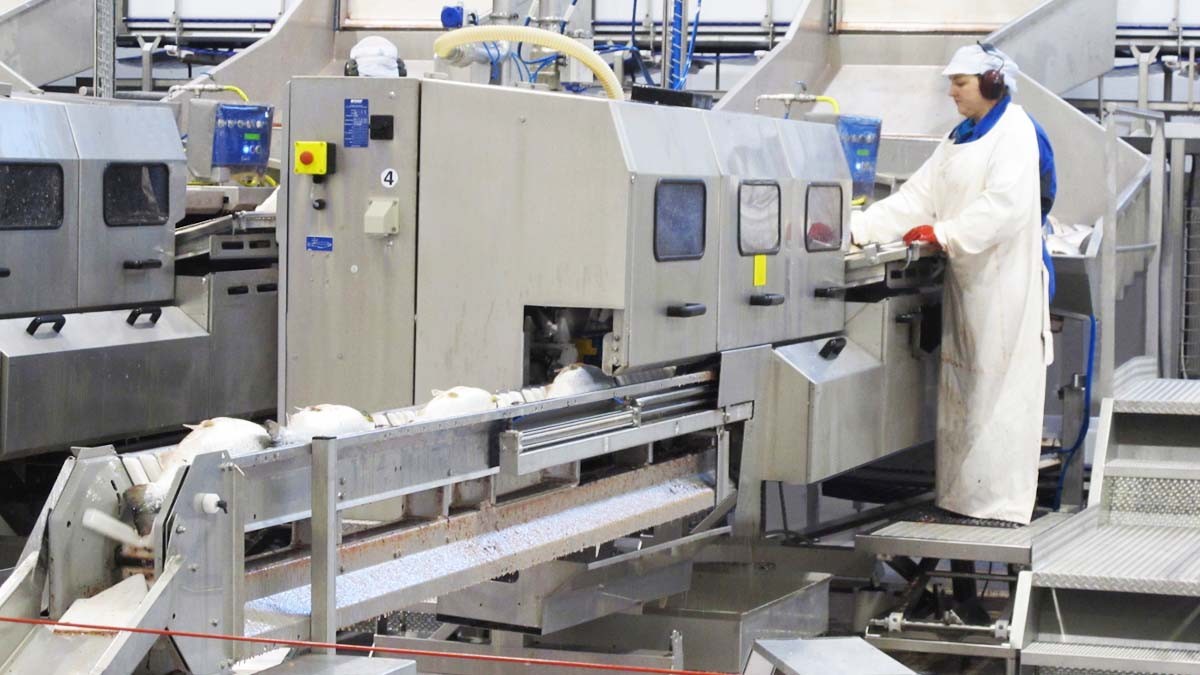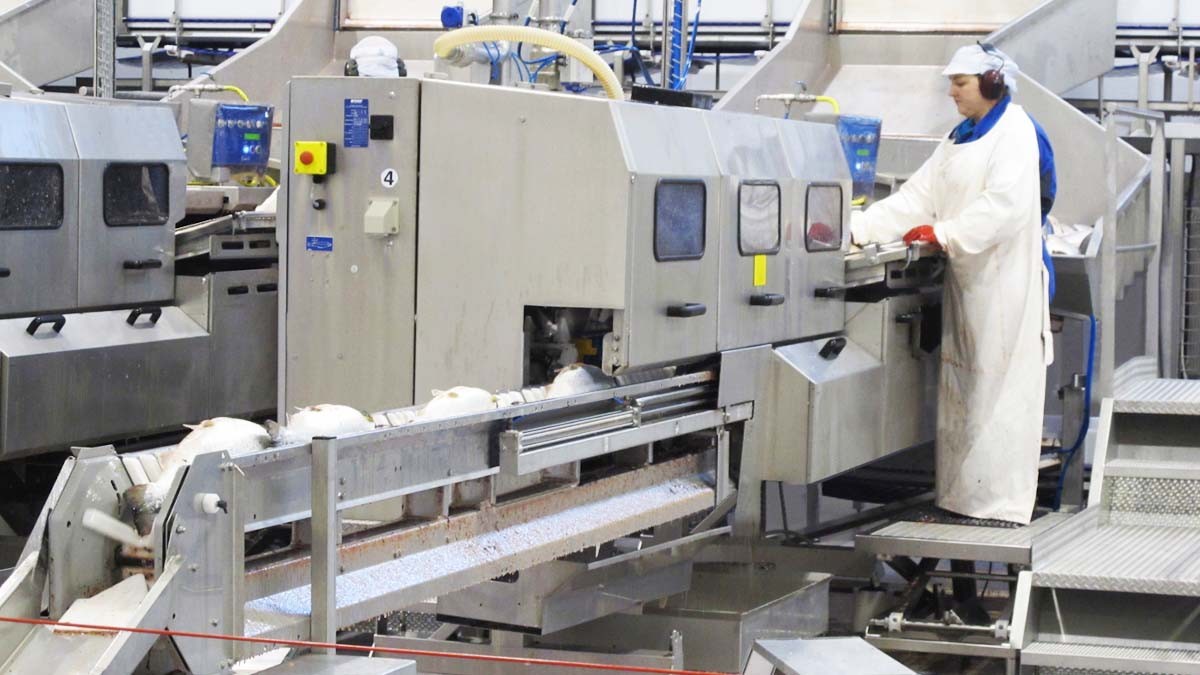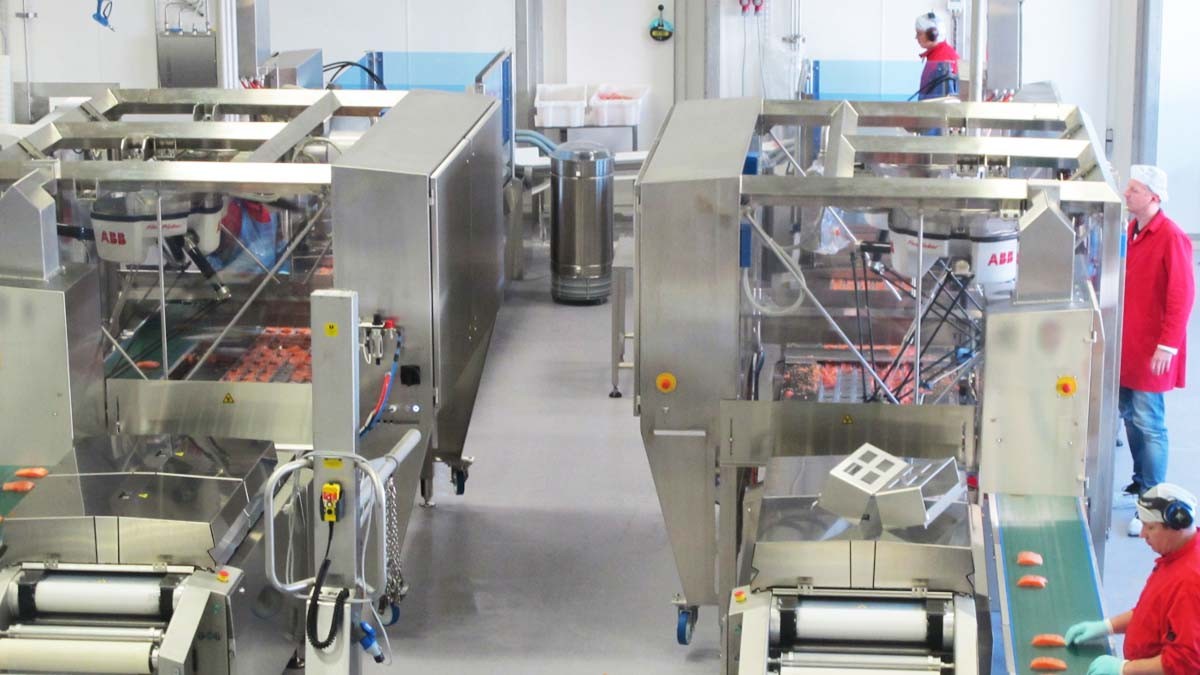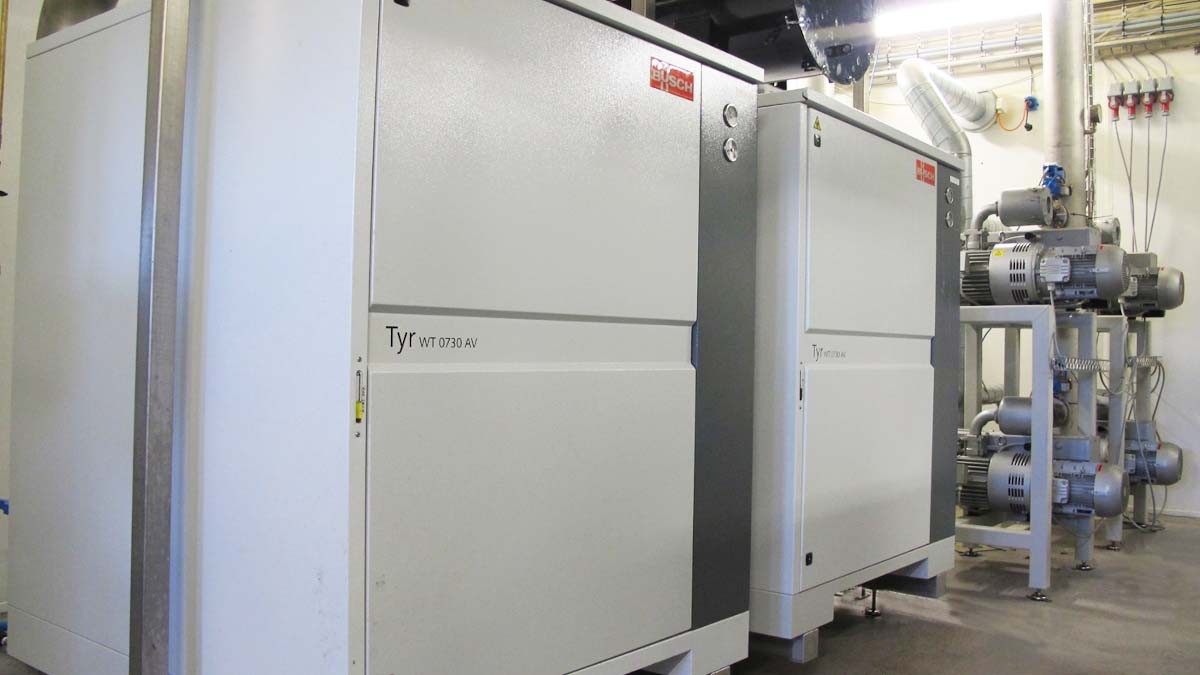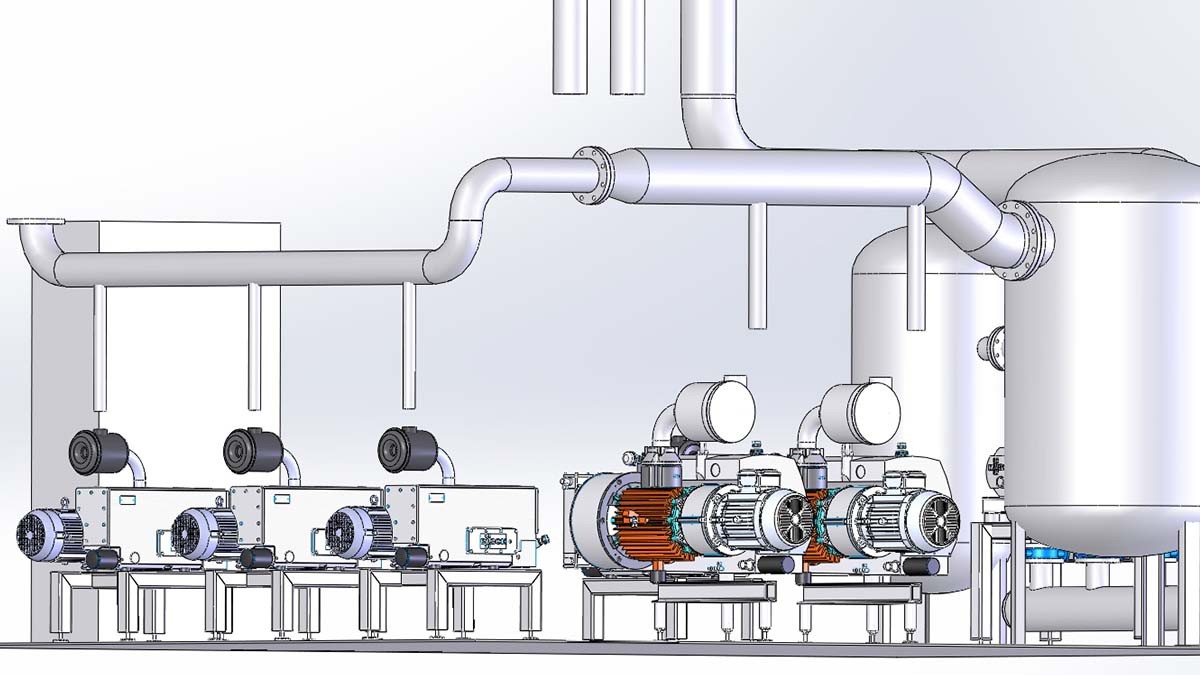Manufacturing Salmon Products Using State-Of-The-Art Vacuum Technology
Nordlaks Produkter AS
Stokmarknes, Norway
|
07.12.2015
|
7 min
Nordlaks Produkter AS operates one of the world's largest and most modern salmon processing plants in the northern Norwegian small town of Stokmarknes. In this plant, Atlantic salmon farmed in the company's own off-shore aquacultures are processed and supplied to the retail market in the form of complete fish, fillets and portion-sized pieces. In order to guarantee
high standards of quality and hygiene, the salmon are processed into high-quality food products using state-of-the-art technology in a system that is as fully
automated as possible. Nordlaks relies on vacuum equipment provided by Busch, specifically two central vacuum systems that provide a reliable vacuum supply for
salmon processing and packaging.
Nordlaks Produkter production
Nordlaks Produkter AS runs a fully integrated production plant for the Nordlaks Group, which was established in 1989. With a total of 430 employees across various sites in Norway, Nordlaks produces salmon and rainbow trout from egg cells right through to the finished products. This gives the company control over the entire value creation chain, enabling it to maintain a traceable high standard of quality throughout the production process.
This gives the company control over the entire value creation chain, enabling it to maintain a traceable high standard of quality throughout the production process.
Nordlaks has over 28 licenser throughout Norway, also three hatcheries for breeding smolts.
At the Nordlaks headquarters in Stokmarknes, the company's subsidiary Nordlaks Oppdrett AS farms salmon in off-shore aquacultures and supplies live fish to Nordlaks Produkter AS, which takes care of the processing on the same site.
Every day, 200 to 250 tonnes of salmon are processed by 250 employees on the premises. Most of the salmon produced are still gutted and supplied to the retail market as complete fish, either fresh or frozen. The rest are processed into salmon fillets and portions and packaged up. The plant currently produces 20 tonnes of salmon fillets per day, and this year it is aiming to expand its capacity to a total of 300 to 350 tonnes of fresh gutted salmon. The main sales markets for salmon products are Russia, Spain, Italy, Finland Asia and USA.
Processing
- The salmon are farmed in off-shore aquacultures off the Norwegian coast.
- Once they have reached slaughter weight, the salmon are transported by their own well boat, in several deliveries a week, directly to net enclosures in the sea just outside the processing plant, where they are kept for a couple of days at most.
- The fish, which are still alive at this point, are then conveyed through a pipe line into the processing plant, where they are slaughtered, bled and gutted by machine across several production lines (Fig. 1).
- During this process, the slaughter waste is removed by vacuum and carried to a cyclone from where the waste is pumped to production of fish oil.
- After the fish have been gutted, the production lines divide. One line transports complete fish for packaging or freezing, while the other one takes fish to the filleting area.
- This is where the heads and tails are removed, and the fish are cut in half, boned, trimmed and skinned. These processes are fully automated. The fish fillets are then manually checked and re-trimmed.
- At this point the production lines divide again: some of the salmon fillets are taken away to be packaged as finished products, while the rest are cut into portion-sized pieces and then packaged up. The portions are packaged in vacuum packaging machinery lines (Fig. 2).
Extracting the production waste by vacuum
The fish guts left over from the automated gutting process are extracted directly via vacuum nozzles and transported through a piping system to a cyclone. The fish heads, tails and trimming parts are extracted in batches by vacuum too. Some of these are transported
transported pneumatically via a cyclone separator. These parts of the fish are also used to produce fish oil. The complete system for extracting and transporting away these parts of the fishes has a central vacuum supply (Fig. 3), which is installed in a separate equipment room and connected via a piping system to the processing machines and workstations from which the waste is to be removed. This system, including the piping system and controls as well as the central vacuum system itself, was designed and built by Busch.
This system, including the piping system and controls as well as the central vacuum system itself, was designed and built by Busch.
Since these parts of the fishes are transported in a closed system,
clean and efficient removal is guaranteed, which significantly boosts the level of hygiene during processing. The entire system is
suitable for CIP on a daily basis and is cleaned every day.
The central
central vacuum system for extracting the fish guts is essentially made up of Busch's
TYR WT 0730 AV rotary lobe blowers, which offer a total suction
capacity of 18,000 cubic metres per hour with a constant
vacuum pressure of 400 millibars. The
TYR rotary lobe blowers are frequency-controlled so that the suction capacity can be adjusted, using the controls, to suit actual requirements. This means that the output can be automatically restricted and energy consumption reduced when, for example, not all gutting machines are in operation. TYR rotary lobe blowers are also equipped with an energy-saving motor and work at a high level of efficiency, which makes them extremely energy-efficient.
TYR rotary lobe blowers are also equipped with an energy-saving motor and work at a high level of efficiency, which makes them extremely energy-efficient.
The energy requirement is also reduced even further thanks to the integrated frequency control system for the drive motors. Pressure drops in such a
vacuum conveying system is essential and therefore the design of the vacuum pipelines is most important in order to minimize the energy consumption. The vacuum for pneumatically transporting the fish heads, tails and trimming waste is generated by four
R5 rotary vane vacuum pumps. With a suction
capacity of 1,200 cubic metres per hour, these extract the fish guts in batches and transport it through a closed piping system to be made into fish oil.
Vacuum packaging
The two packaging lines are equipped with
thermoform fill-seal packaging machines. This means that a vacuum supply is required for thermoforming the bottom film and removing the air from the packaging.
This means that a vacuum supply is required for thermoforming the bottom film and removing the air from the packaging.
Both packaging lines have a central vacuum supply system from Busch (Fig. 4), which offers three different vacuum levels:
- forming vacuum for thermoforming the bottom film of the packaging
- rough vacuum for maintaining a constant vacuum in the piping system
- fine vacuum for removing air from the packaging
Benefits of our processing and packaging solutions
This system is designed to ensure that the pressure in the packaging does not exceed 10 millibars. By maintaining a constant low vacuum in the piping system or in the vacuum chambers, air can quickly be removed from the packaging at the required vacuum level and fast cycle times and packaging speeds can be achieved. The system is made up of
R5 rotary vane vacuum pumps in various sizes. These guarantee a vacuum supply to the forming station and a low vacuum in the chambers and pipes. Three Busch Roots vacuum pumps are used as boosters and the additional suction capacity they provide makes it possible to achieve the fine vacuum required for packaging quickly.
Nordlaks Produkter AS runs on a
two-shift basis, which means that the vacuum supply for the entire plant is in operation for
17,5 hours per day. It is therefore particularly important to have a readily available and highly reliable vacuum supply system in place. In Busch, Nordlaks has a partner that specialises in vacuum technology and can draw on decades of experience in developing food processing and packaging solutions. Busch has 59 companies across the world, and its headquarters are located in Maulburg, Germany. BuschVacuum Solutions has been established in Oslo since 1990. Busch Vacuum Solutions is a professional partner for all aspects of vacuum and overpressure generation for the
farming, processing and packaging of fish.
Stokmarknes, Norway
|
07.12.2015
|
7 min
